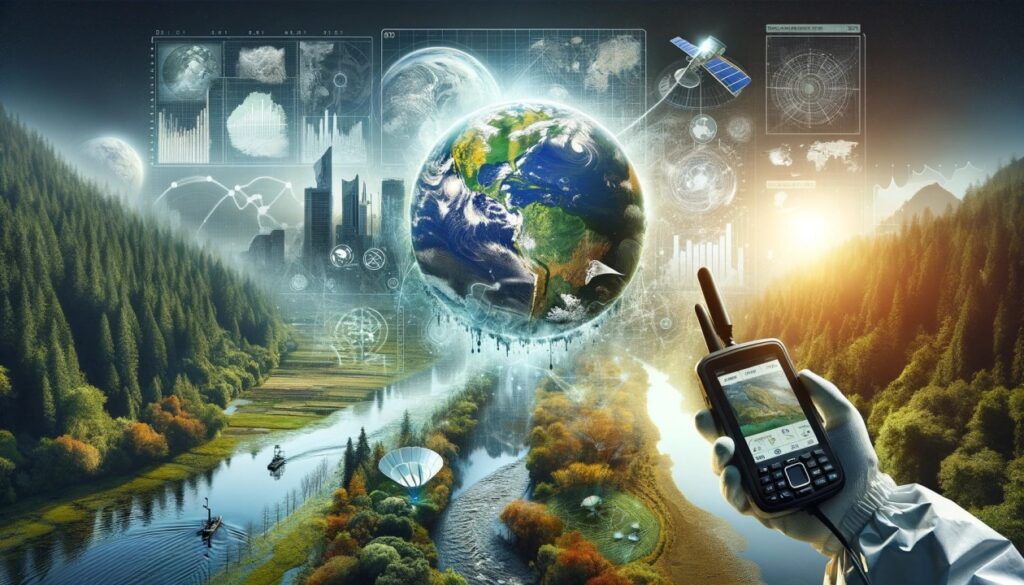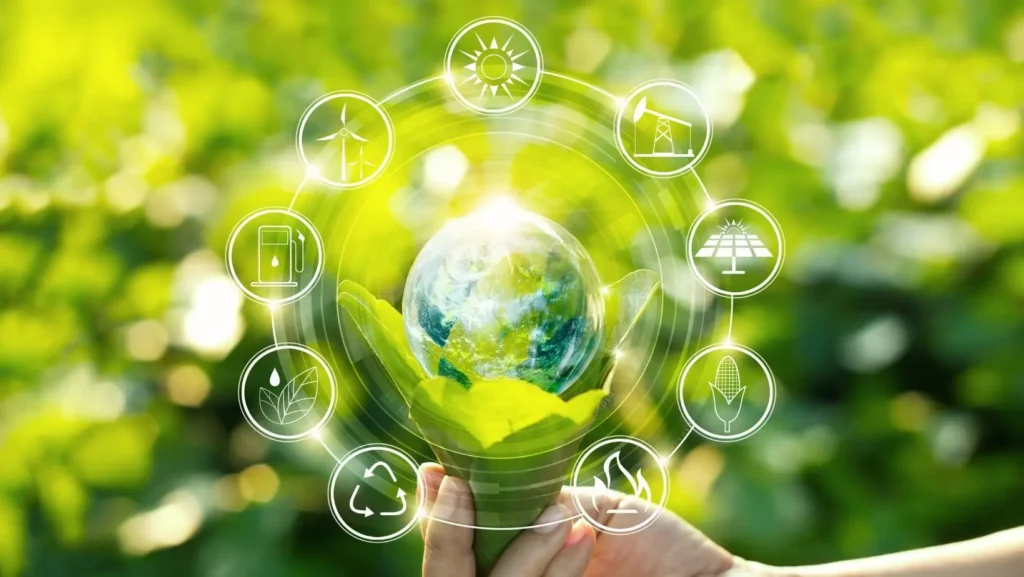
Climate change is an urgent threat, with more extreme weather, rising seas, and environmental harm expected worldwide. Creative thinking and science will provide solutions to this global challenge.
As global temperatures continue to rise at an alarming rate, the role of innovation becomes increasingly critical in both mitigating current impacts and preventing future damage.
The convergence of technology, policy, and human ingenuity provides promising avenues for tackling these unprecedented challenges, further enhanced by the rapid advancement of digital tools for monitoring and intervention.
Tracking Environmental Changes
The first step toward addressing climate challenges is using technology to monitor what is happening in oceans, air, and ecosystems. The experts over at Blues.com say that environmental monitoring IoT sensors are increasingly being set up to measure signs of climate change globally.
On land, wireless sensor networks track precipitation, temperature, plant life cycles, and animal migration patterns. Underwater smart sensors follow ocean acidification, sea level rise, and coral bleaching while atmospheric satellites, weather balloons, and solar radiation trackers gather climate data from the skies. All these monitoring systems feed enormous amounts of climate intelligence to researchers.
The environmental IoT allows scientists to analyze micro-changes and emerging trends across regions and decades. This gives governments and communities better information to guide climate action plans. It also helps individuals understand how daily choices impact the environment locally and globally.

Innovations to Reduce Emissions
A major priority in the climate crisis battle is developing innovations that reduce human greenhouse gas emissions, especially from transportation and energy generation. These emissions trap heat and cause average global temperatures to rise dangerously.
Engineers keep improving clean technologies like electric vehicles, high-efficiency appliances, and renewable energy infrastructure. Electric cars and solar panels get cheaper and better year after year. New materials like durable wind turbine blades allow harvesting more renewable power. Technological breakthroughs make these eco-friendly options affordable alternatives to fossil fuel reliance.
As well as this, innovators are creating new techniques and materials to capture carbon emissions before they spread. Direct air capture systems filter out carbon dioxide from the skies. Advanced concrete mixtures can trap CO2 during curing. Innovations like this give hope for unwinding at least some prior emissions.
Sustainable Agriculture and Forestry
Farming and land management also play a significant role in fighting climate change. Agricultural activities alone account for over 25% of greenhouse emissions worldwide because of fertilizers, livestock, soil disruption, and deforestation.
Thankfully, many impactful innovations address sustainable farming and smarter land use. Enhanced animal feed additives reduce livestock methane. Advanced drones map crop growth patterns to minimize fertilizer usage and autonomous electric tractors allow zero-emission precision farming. IoT soil sensors optimize water and nutrients for plants. Seed optimization and gene editing boosts crop yields. Plastic alternatives like compostable plant fiber packaging curb waste.
Forestry innovations are equally important. Drones and LIDAR mapping guide targeted reforestation efforts on degraded lands. Biotech tree modification or assisted migration helps species survive warming habitats. Mixing tree varieties enhances forest resilience. Satellite imaging detects illegal logging activities faster. All these innovations allow drawing down more carbon from the air while reviving vibrant ecosystems.

Empowering Innovators
Delivering environmental innovations depends heavily on supporting great ideas by expanding access to research funding, technical facilities, and collaborative networks.
Governments play a lead role by running open innovation challenges to solve specific issues. Increased grants for energy, transportation, and agriculture research pool top talent. Tax incentives for eco-friendly tech companies spur investments. Startup incubators also unleash fresh thinking.
At academic institutions, targeted climate research centers and interdisciplinary labs foster innovation. Hands-on inventor spaces allow student concepts to become prototypes; climate venture funders partner with universities on licensing intellectual property.
Industry leaders also maintain their own innovation labs, provide suppliers with environmental goals, and pursue joint efforts through industry consortiums. Partnerships between companies, governments, academia, and nonprofits create powerful innovative ecosystems.
Driving Adoption at Scale
The most promising innovations only matter if adopted widely enough to affect climate measures. Getting promising technologies to market and convincing consumers to switch takes strategic policy support.
Tax rebates, product regulations, industry standards, and carbon pricing create demand-pull. Upfront subsidies, low-cost financing, and scalable manufacturing incentives improve access and affordability. Strong outreach and marketing build public acceptance.
The market quickly adopts innovative technologies when reliable support systems are in place. Costs drop further as scale increases until clean alternatives outperform conventional options on merits alone. Sustainability transforms from luxury to norm.

The Innovation Era Has Begun
With unprecedented warnings from scientists, the planet desperately needs innovators focused on addressing climate change before consequences become irreversible. Promising solutions already exist across the energy, transportation, industry, and agriculture sectors, but require refinement and scaled adoption.
Governments, companies, and investors that provide robust backing for environmental innovation will lead the way. Young engineers and scientists who pivot their talent towards climate tech can make huge impacts. One breakthrough concept or technology adapted broadly can get meaningful results on emission reduction and carbon dioxide removal goals.
The emergence of artificial intelligence and machine learning has added powerful new tools to climate innovation. AI helps optimize renewable energy grids, predict extreme weather events, and identify the most effective areas for conservation. Machine learning models process vast amounts of climate data to reveal patterns humans might miss, accelerating the pace of discovery and implementation.
Conclusion
While innovation focuses heavily on preventing further climate change, equal attention must go to helping communities adapt to changes already locked in. Engineering advances in flood control, drought-resistant agriculture, and disaster-resistant infrastructure will prove crucial.
Climate change is humanity’s greatest innovation challenge yet. But with coordinated efforts across public and private sectors, societies can develop game-changing mitigation and adaptation solutions needed to safeguard the planet. The focus must remain on urgency, as each year of delay makes the challenge more difficult to address.
Success requires not just technological breakthroughs, but also innovations in policy, financing, and social systems to ensure solutions reach those who need them most. Only through this comprehensive approach can innovation truly deliver on its promise to help solve the climate crisis.








